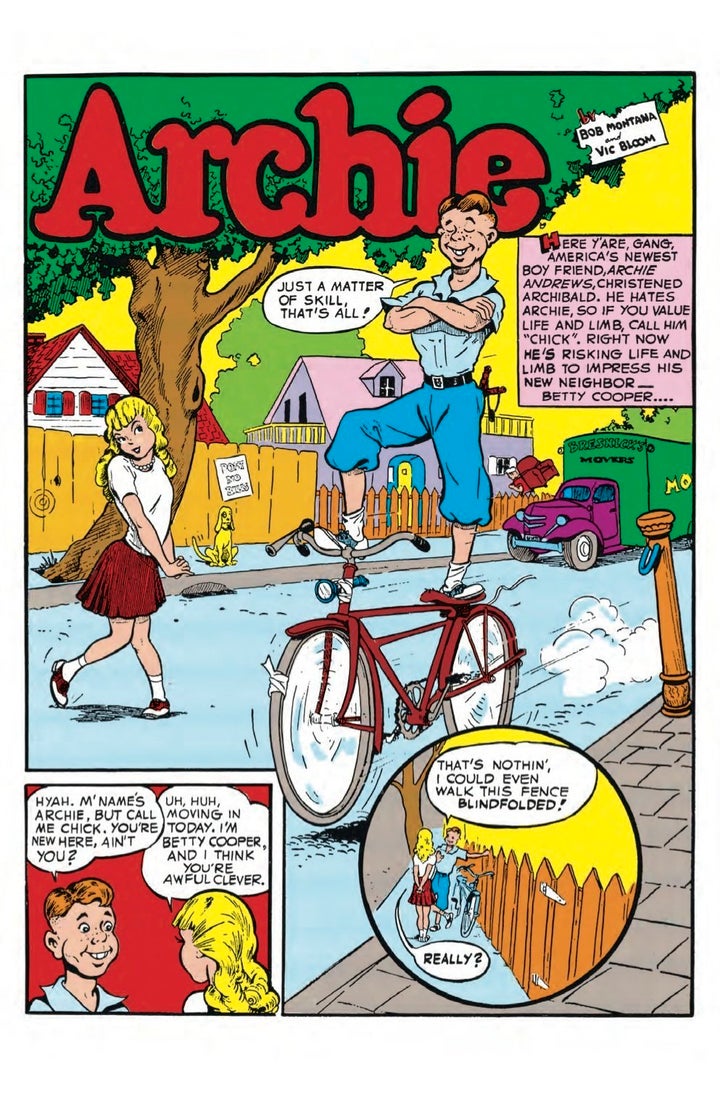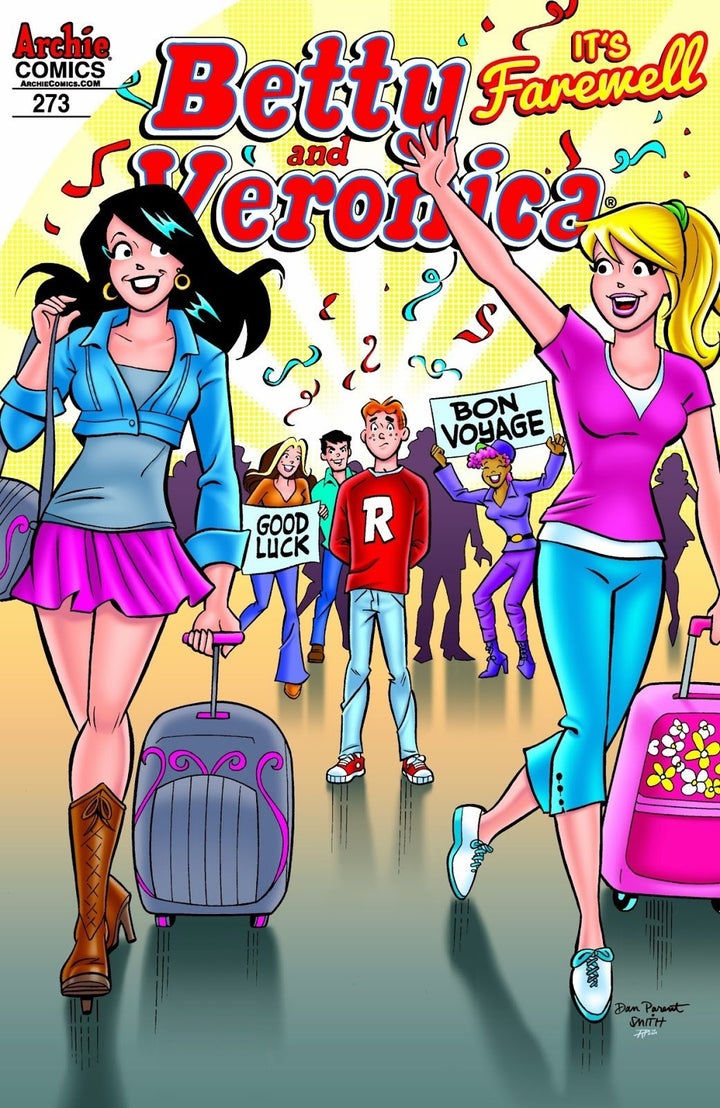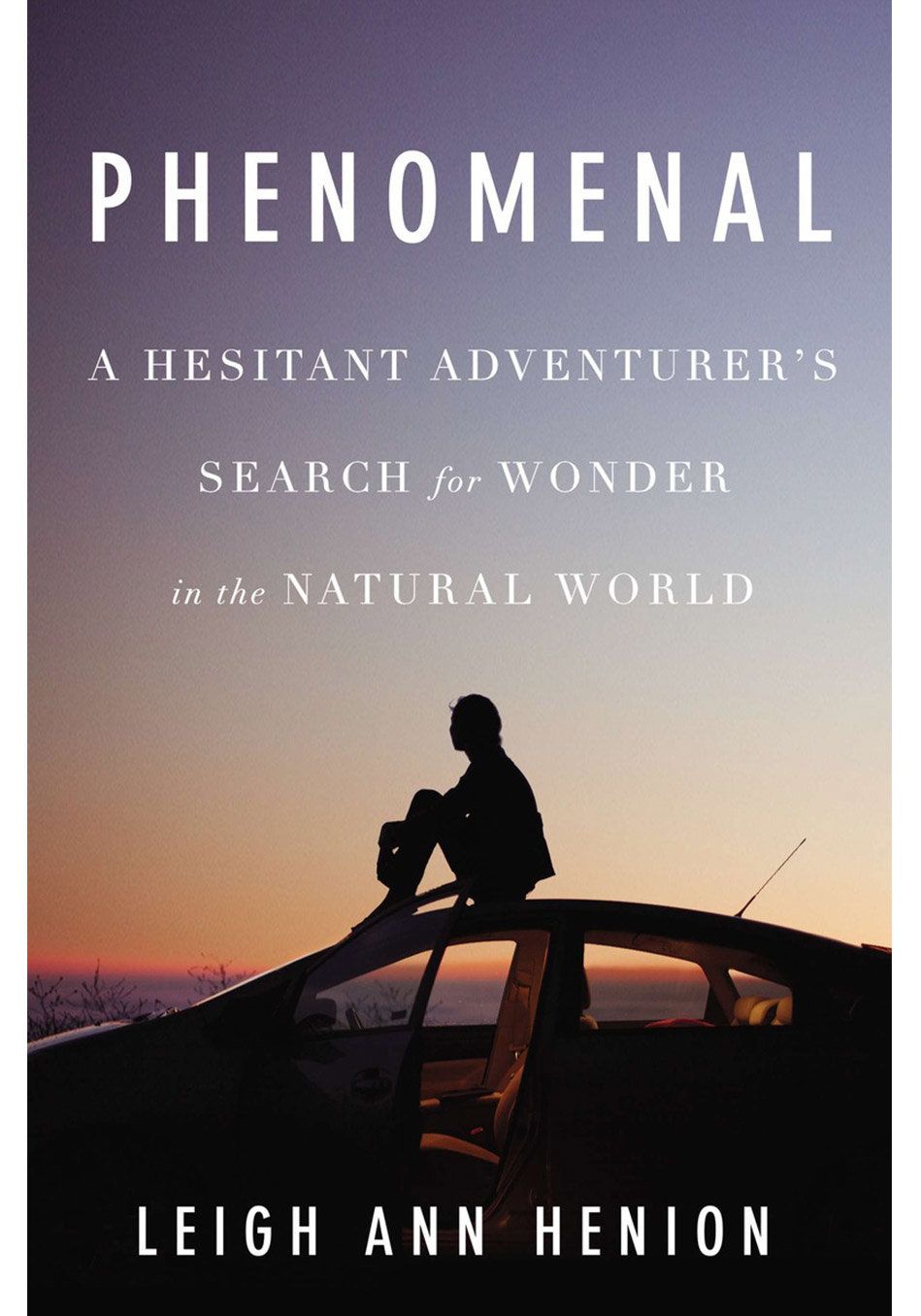
In 1941, the comic-book world was introduced to a confident if slightly dweeby redhead named Archie Andrews. He stood smugly on top of a bicycle seat near a caption dubbing him “America’s boyfriend.” The feat was an attempt to impress his neighbor, a coquettish blonde looking on coyly. “You’re awful clever,” she marvels, flipping her blond tresses to and fro. She stands with her knees capped and her chest puffed out -- like a child, but with womanly curves.
Thankfully, times have changed in the past 75 years, and this sort of representation of women -- as wide-eyed, ego-boosting props -- wouldn’t fly today. But, until recently, the "Archie" series was woefully behind the times. Sure, there've been a few perplexing attempts to keep the franchise fresh; In "Archie Marries Veronica/Archie Marries Betty" our freckled hero dies, and in "Afterlife with Archie" he battles the undead.
And, of course, there was the long-running "Betty and Veronica" spinoff, ostensibly bringing the series’ female protagonists to the forefront since its creation in 1950. But the young women still served as Archie’s foils (the series is called “Archie’s Girls Betty and Veronica," after all) exhibiting few interests outside of those that served the purposes of impressing him.

This year at Comic-Con in San Diego, the first issue of an Archie remake was unveiled, and its representation of women -- and teen life in general -- is a much-needed improvement. Created by comic book artist Fiona Staples (who shaped the style of the popular “Saga” series) and writer Mark Waid (who’s spoken openly about gender roles and comics), its first issue features a slightly familiar-looking, denim jacket-donning redhead who’s coping with his first big breakup.
The installment still has the decidedly wholesome tone the comic’s creators have always backed, but it’s got an edge and an honesty that the series has long lacked. By the second panel, students of color are represented laughing alongside Archie, and not a single unrealistically long-limbed blonde is in sight.
When we do meet Betty, Archie muses, “she smells like flowers and motor oil.” She’s got a bit of the Gillian Flynn-trademarked “Cool Girl” air -- a messy updo and the chops to repair cars -- but in the first installment alone, she has agency. She isn’t going out of her way to make amends with her ex-beau, and her casual look isn’t angled to impress. Her outfits are only occasionally form-fitting, and she even has (gasp!) a muscular frame.

Compare this with a four-issue series released earlier this year -- “Farewell Betty and Veronica” -- and the differences in how the heroine speaks and dresses are clear. On the cover of “Farewell,” Bettie’s lips are unrealistically full, her hair implausibly shiny. Her hot pink T-shirt is as ridiculous as rocking a scrunchie in 2015 -- which she’s also doing, rather earnestly. She’s pitted against her frenemy Veronica, who’s long been characterized as silly, high-maintenance and more forthright about her romantic pursuits. (Waid and Staples's rethinking of Veronica's character will be revealed in the reboot's second issue, when the Lodges move to Riverdale.)
That the pair’s narratives have always been presented in direct opposition is about as old-fashioned and offensive as allowing two women to duke it out for the title of “The Bachelorette,” yet that’s been the trend in the series since its inception.

Thumbing through issues as a kid in the '90s and early '00s, I felt a sense of dread when faced with what at the time seemed like an existential question akin to Hogwarts house placement. Was I a Betty, or was I a Veronica? The former was boring, like playing house; the latter was frightening -- Veronica was always stirring up trouble. I remember deciding, ultimately, that I’d rather be the rebellious one, but wondered with each page whether Veronica would ever win over Archie’s heart for good, or whether her rowdy tendencies would cost her the romantic happiness she pursued.
Obviously, this is a horrible dichotomy to present to young girls. Worse even than Bella’s waffling between a rowdy wolf and a thoughtful vampire. At least with Twilight, the heroine is choosing who to be with, not who to be. Her personality wavers little in the face of lovesickness, whereas Betty and Veronica, from the ‘40s till now, have prioritized approval.
But, if the tone of this first foray back to Riverdale continues throughout the reboot, we can wave goodbye to the one-dimensional sterility that’s come to define the world of Archie. The idealized suburb, where there's nothing better to do but quibble over boys, may seem pleasant to some, but at the cost of a flat representation of most, not least of all Betty and Veronica.
Also on HuffPost:

